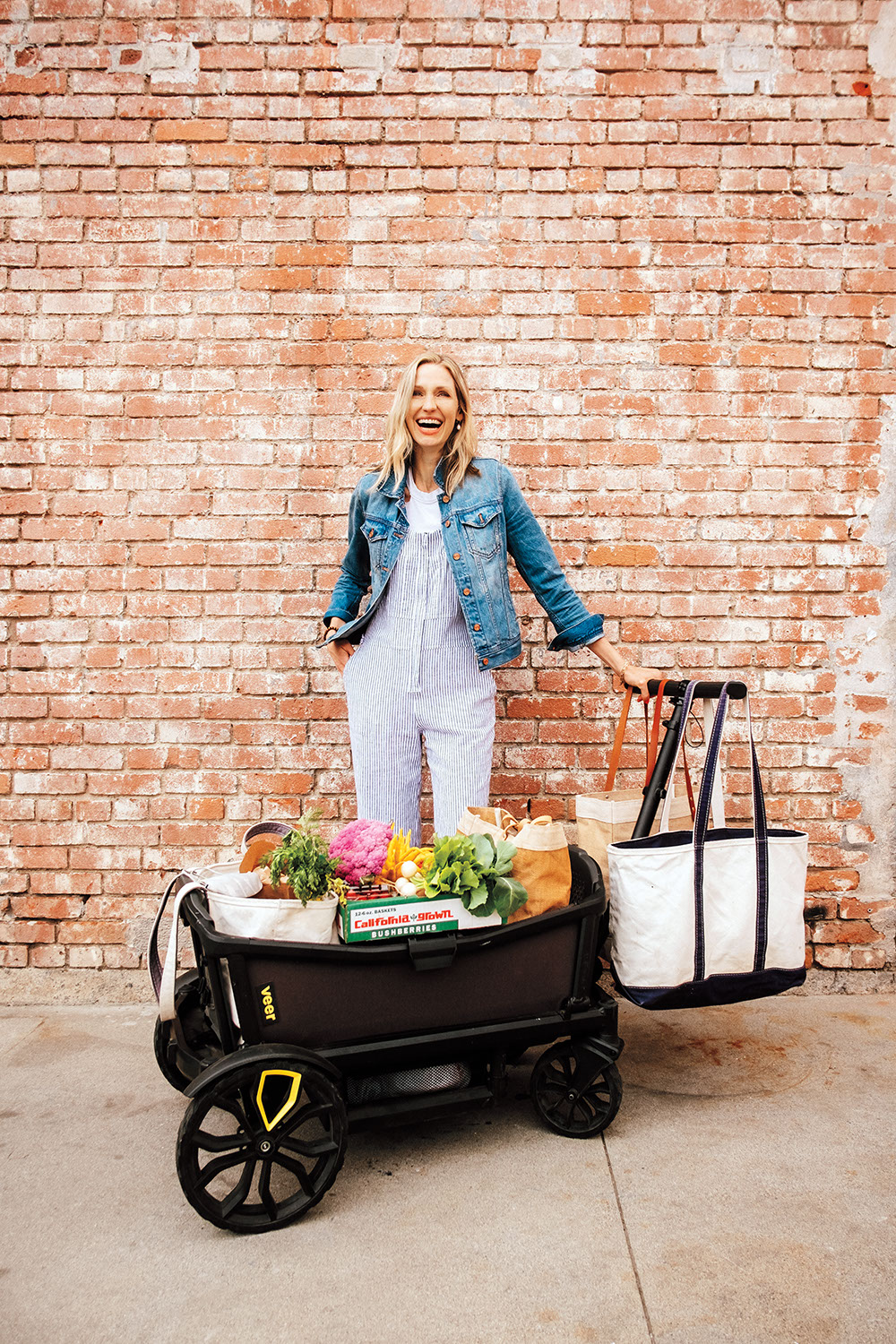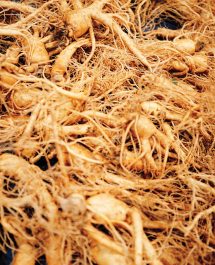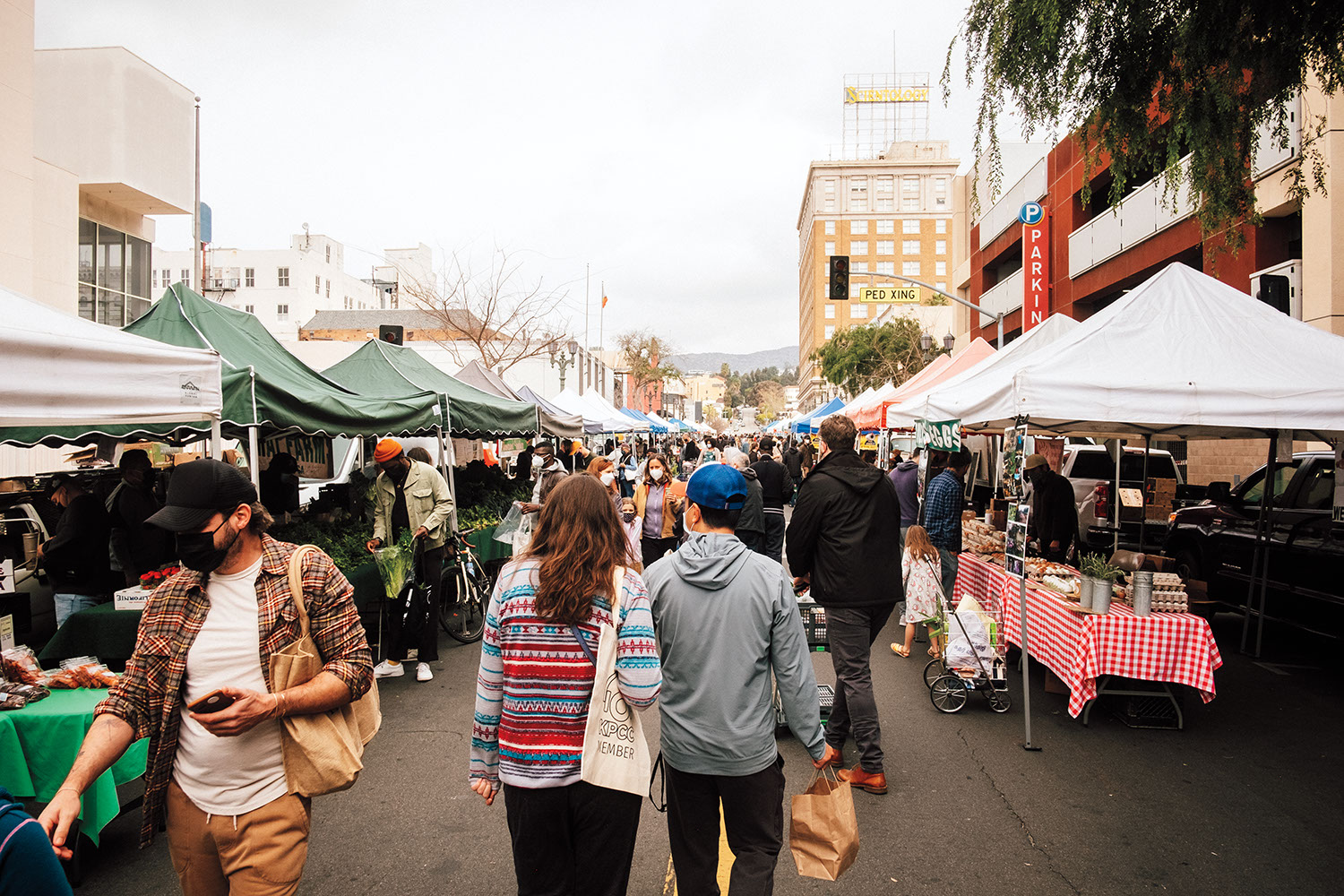
STORY BY SANDRA S. SORIA ✷ PHOTOGRAPHED BY JONAS JUNGBLUT
Our food columnist Catherine McCord knows her way around a farmers market. With her Veer wagon, plenty of reusable bags, and generally a child or three in tow, she weaves through the growers, shoppers, and booths like a woman on a mission. Because she is—a mission to feed her family the freshest, most transparently-sourced food available. We followed along with her to her favorite local market—the Hollywood Farmers Market—to get tips for buying the best. Bonus: Catherine shares her smart storage ideas for prolonging the freshness of the produce when you get your bounty home.
Catherine is a former supermodel, an actress, cookbook author, culinary-school graduate, entrepreneur, and, most importantly, mom to three kids. But we’re giving her a new title: master of the farmers market. She’s honed her expertise over the past 20 years of frequenting these al fresco markets, where she scoops up about 80 percent of her groceries. “During the pandemic, it got to the point where I was buying 100 percent at the farmers market,” she says. “I didn’t go to the grocery store for six months.”
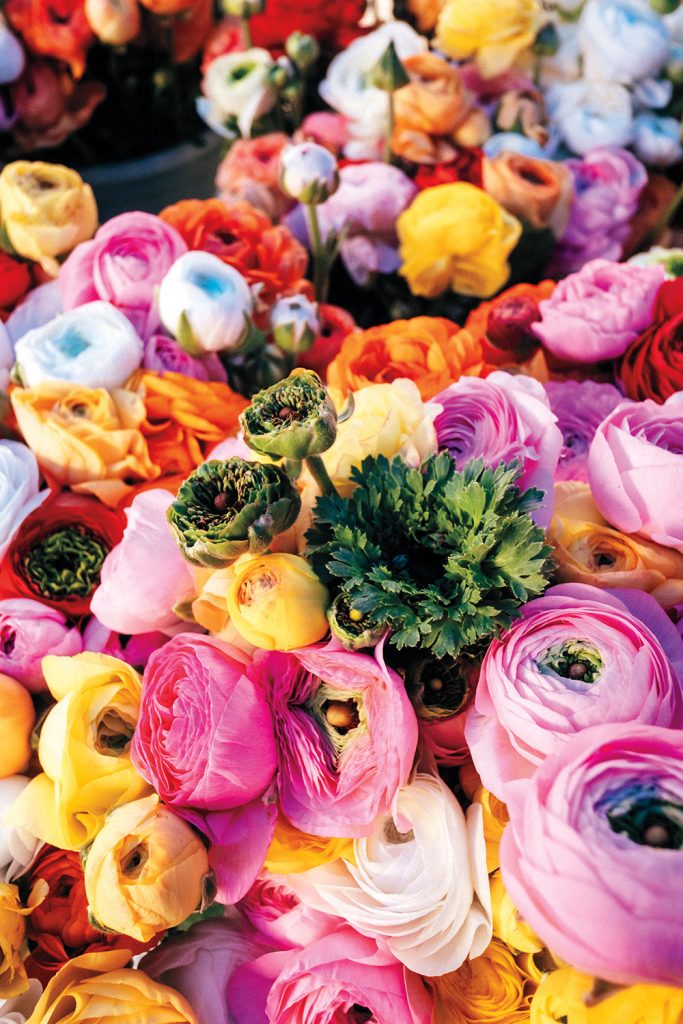

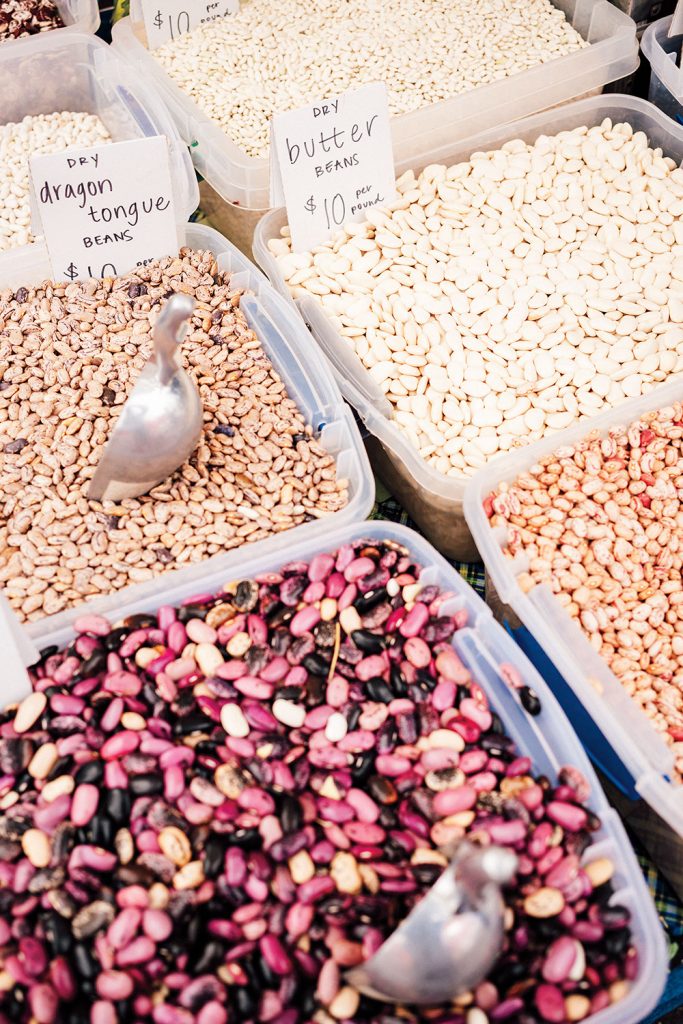
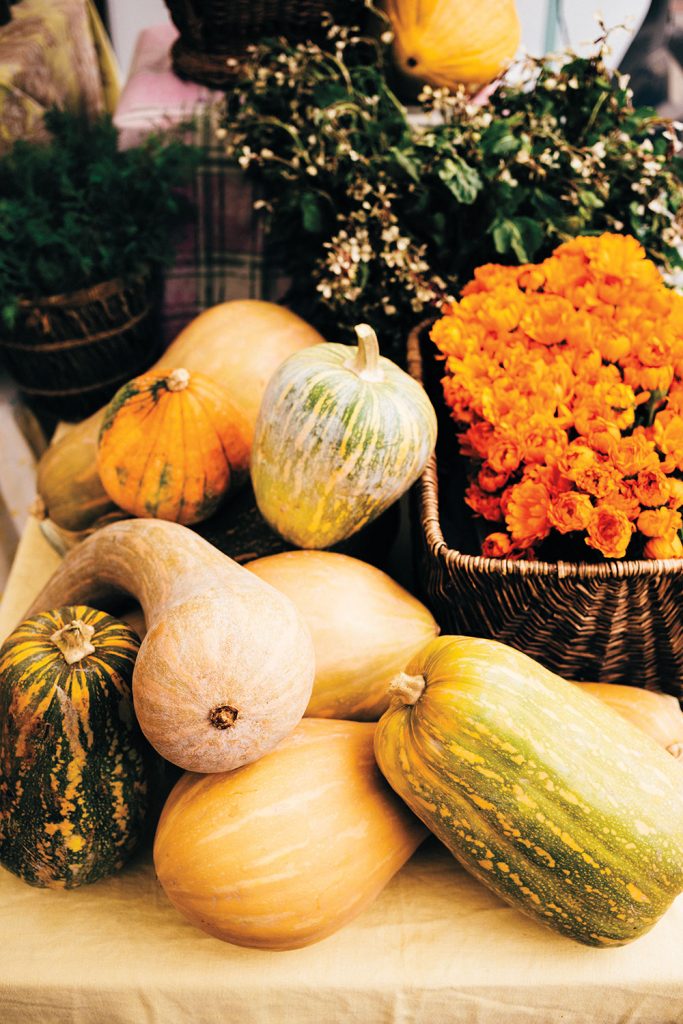

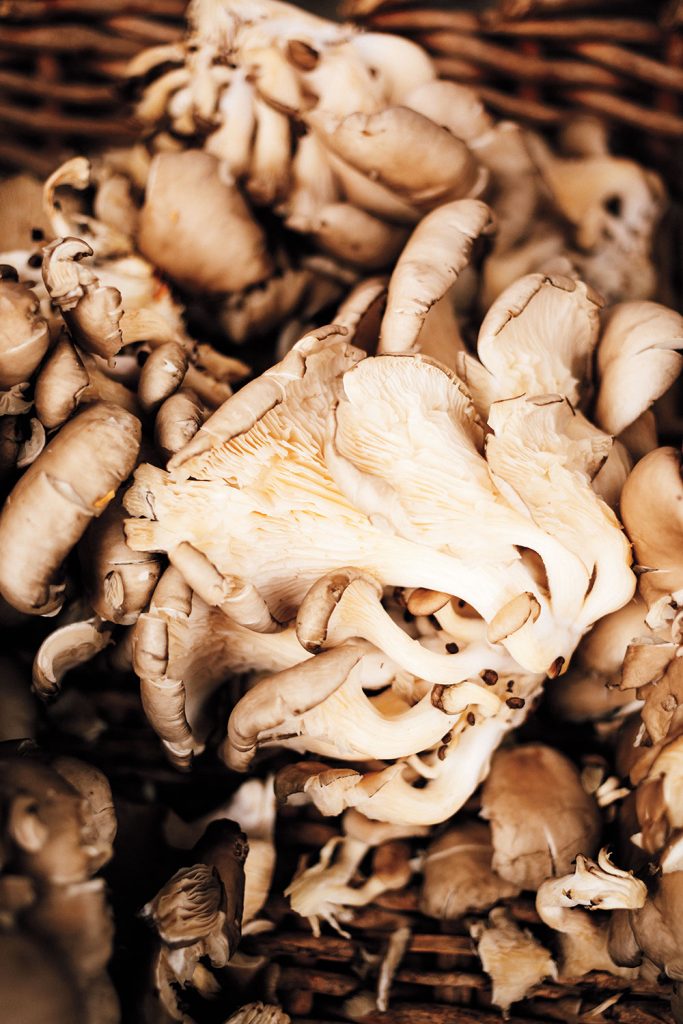
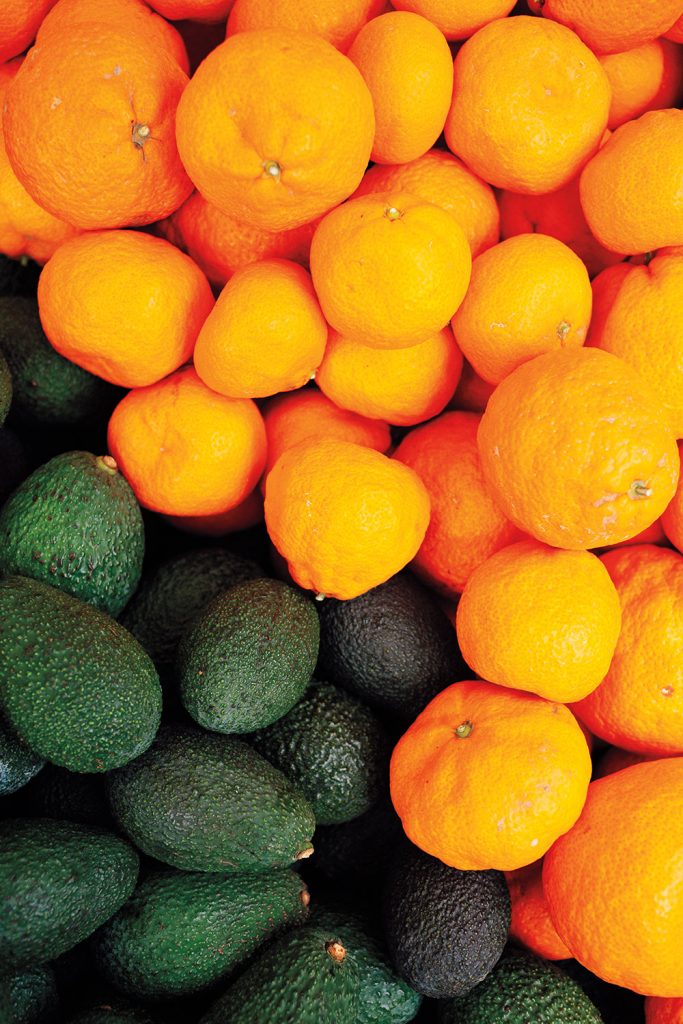

Catherine is lucky to be a resident of L.A., where there’s a multitude of open-air options. But most cities and towns across the States now have sizable in-season markets that feature booths brimming with super-fresh, super-local food. “They’ve just become these incredible places,” she says. “You can get everything from your eggs to your milk, your nuts to your meats, any kind of bread—obviously fruits and vegetables—and everything in between. It’s a unique place to buy really nourishing food.”
Even more than procuring a variety of the freshest foods for each season, for Catherine it’s a way to support small farmers who use sustainable growing practices. “You get this really incredible food, but you also often get to hear the story behind it,” she says. “And you’re buying food that is usually picked and put on one truck, often that very morning. That’s as opposed to being picked, put on a truck, put on a plane or train, transferred to another truck, and then placed on the grocery shelf where it might sit for days.”
Catherine credits these farmers and their enthusiasm for the food they raise with making her children—Kenya, Chloe, and Gemma—better eaters. “People are just so friendly and want to help each other,” she says. “This is how I would say that my kids all became such good eaters. So many of these farmers will be like, ‘Oh! Come here! Try this mushroom.’ They make it exciting. They really expose the community to what they’re growing and why they love it so much.”
Shopping the markets is also a way to find something many of us are craving right now—community. “I feel like these are my people and going to the markets energizes me,” Catherine says. “I’ve always considered the farmers market like going to church on Sundays. It’s my religion.”
Prolong your Produce
Catherine’s pet peeve? When food goes bad before her family gobbles it up. Over the years, she’s come up with strategies to coax her victuals to stay fresh longer. Here are her tried-and-true storage tips.
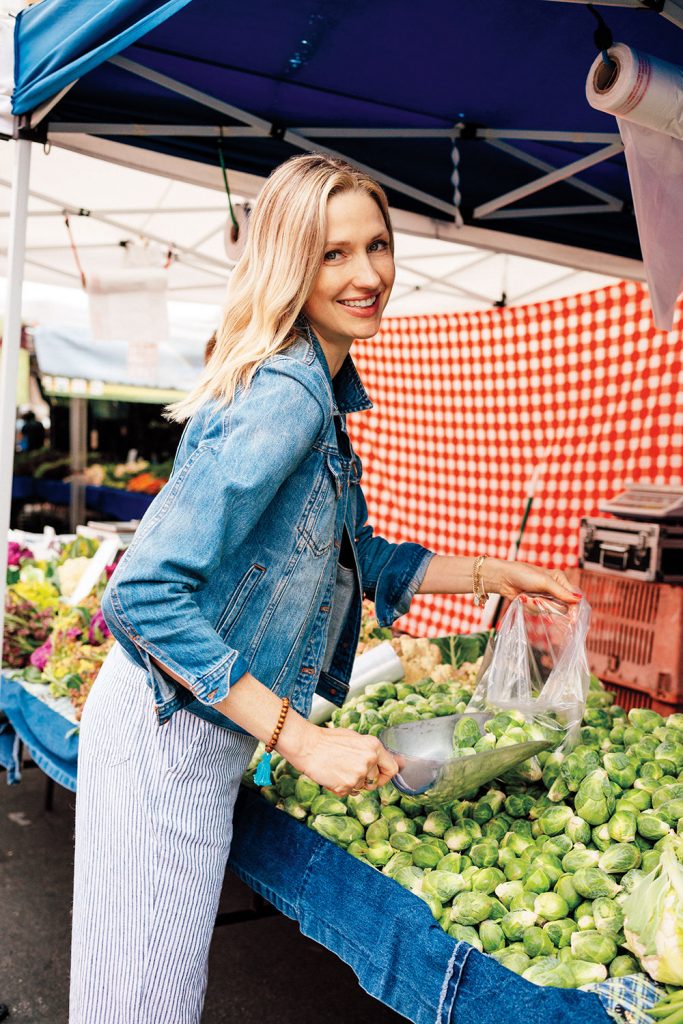
Fruits and veggies produce condensation as they chill, so use unbleached paper towels inside reusable storage bags and containers to absorb any excess moisture. For larger items such as bell peppers, carrots, cauliflower, and cucumbers, line the crisper drawer in your fridge with paper towels and store them loose or in their original packaging.
Leafy greens can be washed, dried in a salad spinner if using within a few days, then wrapped in a paper towel before being placed in a breathable bag—such as a reusable cotton produce bag—and stored in the fridge.
Store potatoes and sweet potatoes in a drawer, or other dark well-ventilated place. The same goes for their friends, onions, garlic, and shallots. However, other root veggies such as carrots ginger, turmeric, fennel, beets, turnips, and radishes will stay a long time in your crisper.
Definitely, wash your produce before you consume it. But because excess moisture promotes bacteria growth, accelerating spoilage, give your fresh food a good rinse only just before you are ready to eat or cook it.
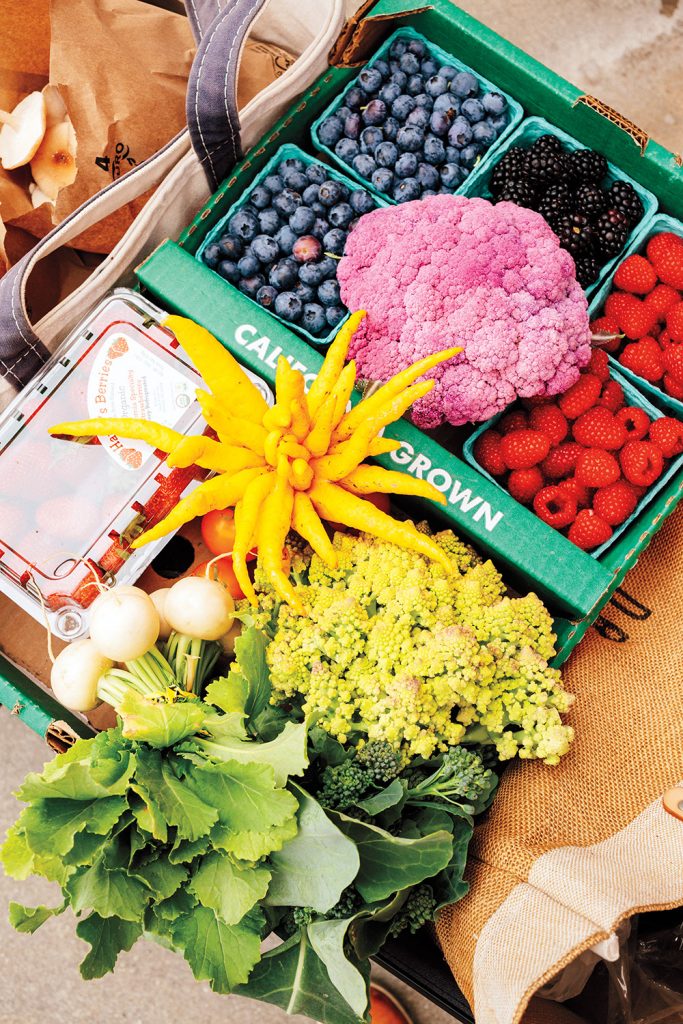
Let most fruit ripen on the counter, then transfer it to the fridge to extend its shelf life. However, tomatoes, avocados, and bananas always should be stored at room temperate. Oranges will fare better and longer on the counter than most fruit. Apples, however, can go right in the fridge, where some varieties will literally last for months.
Mushrooms need room to breathe to prevent them from wilting or softening. Transfer them to a brown paper bag and store in the fridge.
Nuts and seeds can be transferred to an airtight glass container and stored in the freezer where they remain fresh to use for a year or more.
Berries are delicate and definitely should not be washed until just before you enjoy them. To extend their fridge life, line a glass container with a paper towel, place the unwashed berries, and top with another paper towel. Seal the container.
Bananas can spoil quickly (and like apples release ethylene gas as they ripen, accelerating the ripening process of nearby fruit, so give them space). At the first sign of spots, transfer bananas to the freezer to use in smoothies and ‘nice cream.’
Think of fresh herbs like flowers. Store them in a glass filled with water in the windowsill or a section of your counter that gets some sunlight.
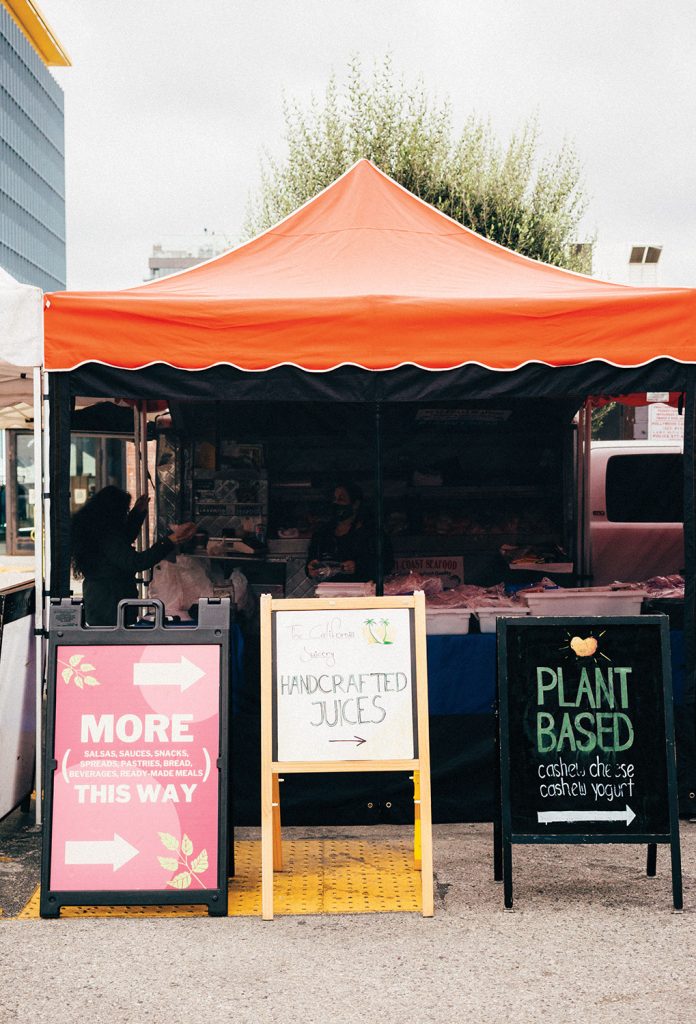
Fresh Shopping Tips
Build relationships. There’s something that is so satisfying about knowing who is growing your food. Their enthusiasm and knowledge about their products is inspiring/
Follow the pros. I look for the people who are buying for restaurants. I’ve learned they generally have big stashes and clipboards. Follow them and ask them what they’re liking. Sometimes I’ll even ask, “Which restaurant are you buying for?” If I love that restaurant, I know their choices have got to be good.

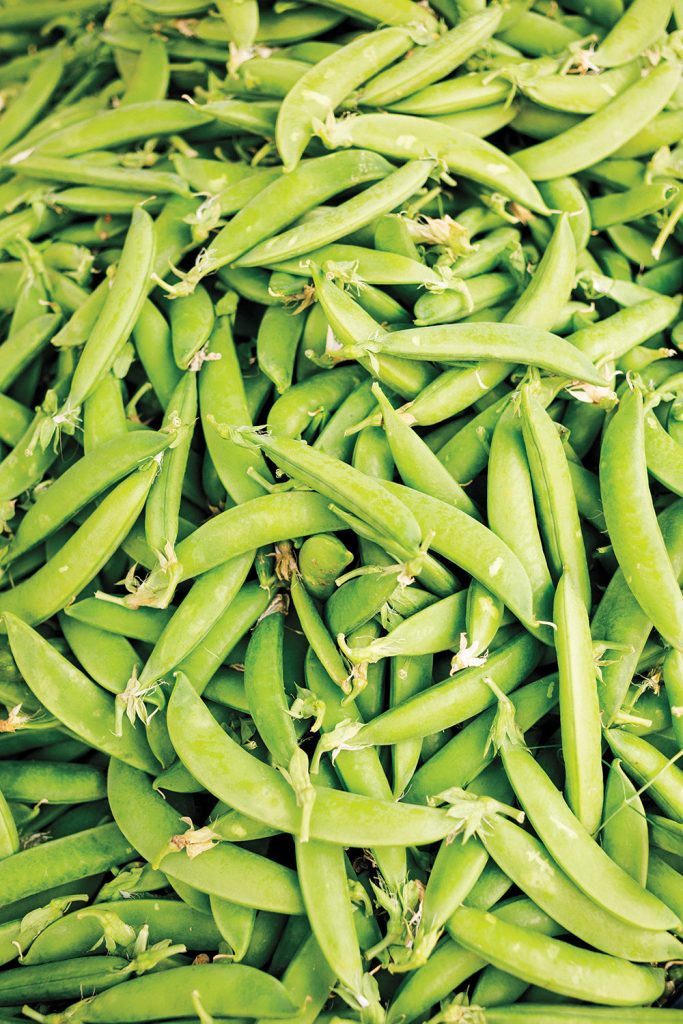
Pack it in, pack it out. I shop for my family of five and extended family, so my haul is substantial. I always bring along large canvas totes and reusable cotton produce bags, so I don’t need any plastic packaging. And a cart is a must. My Veer Cruiser is easy to break down and throw in the back of the car.
Be an early bird. I go right when the market opens. Sometimes there’s super unique fruits or vegetables from farmers trying out new seeds, or it’s a new crop and they might run out quickly. I want to get there because I want to get it when it’s all the best of the best.
Be open to new foods. At almost every stand I’ll ask the folks there, “What’s great right now?” Because they’ll steer you the right way. Often, they’ll ask me, “What do you like? What are you cooking this week?” I always leave the market buying two, three, four things that are new to me or I haven’t bought in a while.
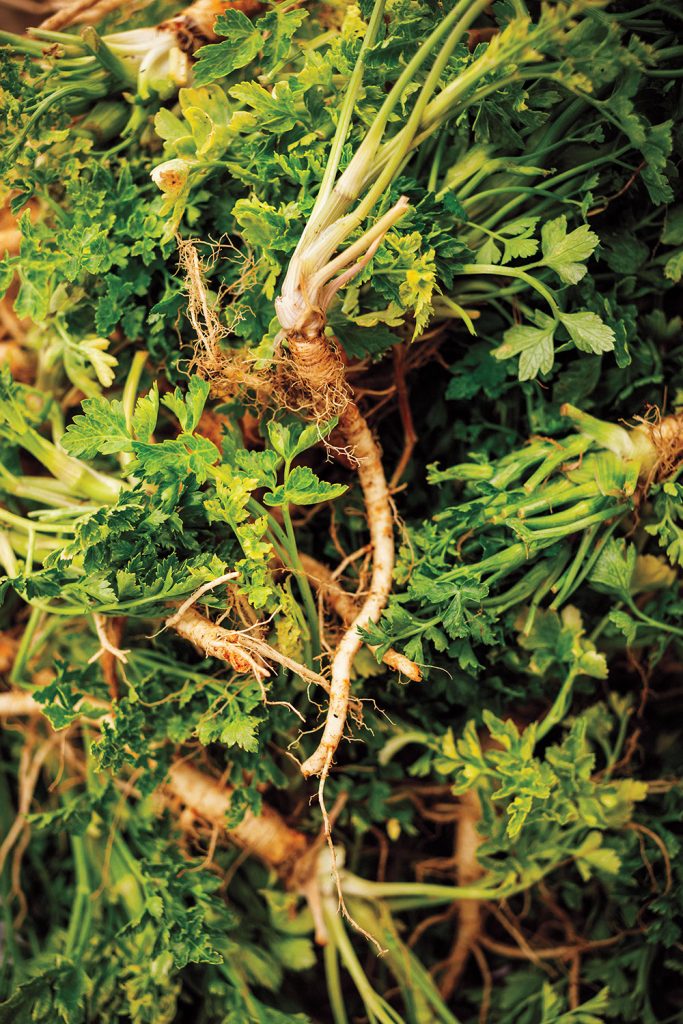

Air Fryer Mushrooms
Catherine is admittedly obsessed with air-fried vegetables. “I can get my kids to eat any veggie if I cook it in my air fryer,” she says. “I’m giving my hubby credit for this one because he was the first one to make air-fryer mushrooms. They totally taste like vegan bacon. They’re super crispy, healthy, and have tons of umami flavor in every bite.”
Gather
16 ounces mushrooms
1 teaspoon fresh thyme, leaves only
1 garlic clove, minced
1 tablespoon olive oil
½ teaspoon kosher salt
To Make
Place all of the ingredients in a medium bowl and toss to combine.
Place the mushrooms in the air-fryer basket and cook at 350ºF for 12 minutes or until edges of mushrooms are crispy.
Good to Know
You can make this recipe with any mushroom varietal—from portobello to shiitake to oyster. If you’re not sure where to start, cremini and baby bella are easy to find.
Meet the Farmers
Catherine has developed relationships with many great growers through her farmers market forays. Here, we spotlight a few of her favorites.

Alex Weiser
Weiser Family Farms, weiserfamilyfarms.com
Alex is a second-generation grower at the Southern California farm his chemistry-teacher father and mother started in 1977. His focus is on creating a biodiverse operation dedicated to sustainable farming techniques.
Catherine says: “Everyone loves Alex. Lots of chefs buy from the Weisers. Everything they grow is next level. I’m always like, Why does this taste so damn good? There’s something in the soil. Something in the something. It’s the Weiser magic.”
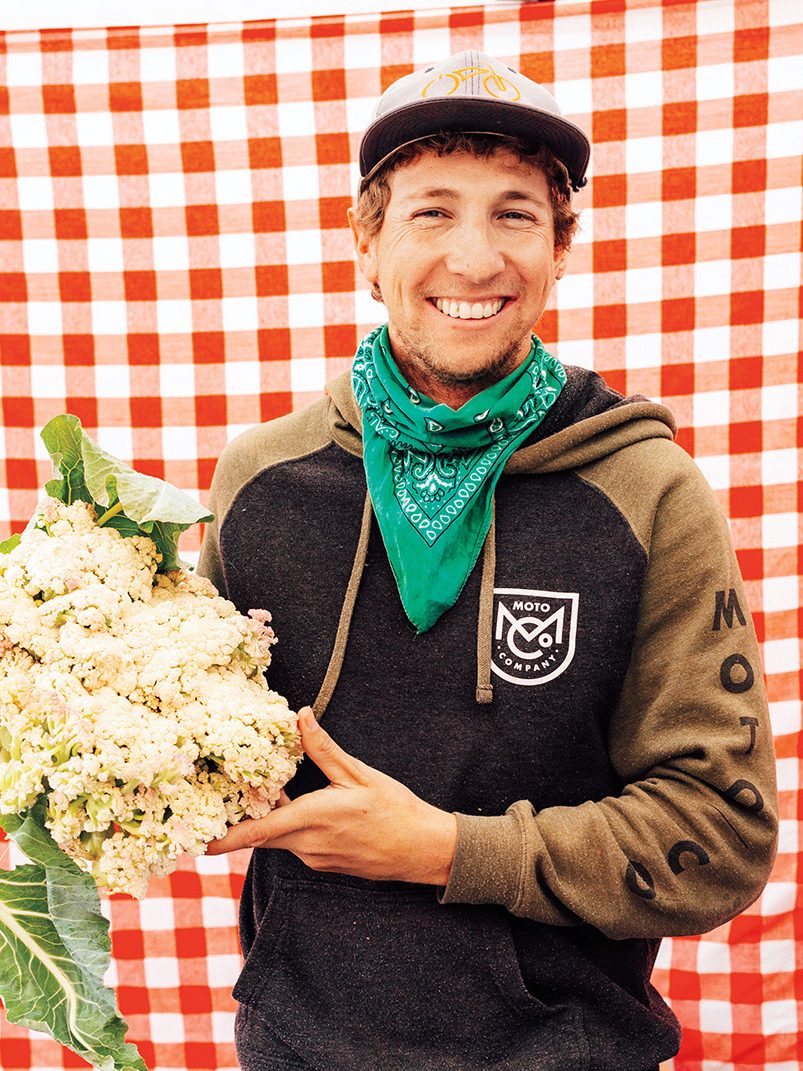
Zach Nichols
2 Peas in a Pod Farm, Inc., 2peasinapod.farm
One family has owned and operated this Central California farm for three generations, specializing in unique—and colorful—varieties of cauliflower and Brussels sprouts, along with fresh and dried beans, and a variety of berries.
Catherine says: I’m totally obsessed. Their cauliflower, their dried beans, their jams—the best! They have this double raspberry that’s incredible. Plus, they’re just so nice. And Zach is really out in the fields. We had torrential rain in January, and he showed me a picture of him in waders above his knees, pulling cauliflower out of the ground. That’s commitment.”

Rafael and Lauren Diaz
The Fresh Foodies Kitchen, thefreshfoodieskitchen.com
Situated in Pomona, California, this couple specializes in organically growing mushrooms and herbs, and in creating mushroom broths and powders and dried herbs without any fillers. Their goal is “to provide the highest-quality mushroom products anywhere.”
Catherine says: “This couple is amazing. They grow the best fresh mushrooms. During the pandemic, they had all this surplus because they supply so many restaurants, which had to shut down. So, they started making mushroom broths, teas, and powders. They took a very scary situation and used it as an opportunity to innovate.”
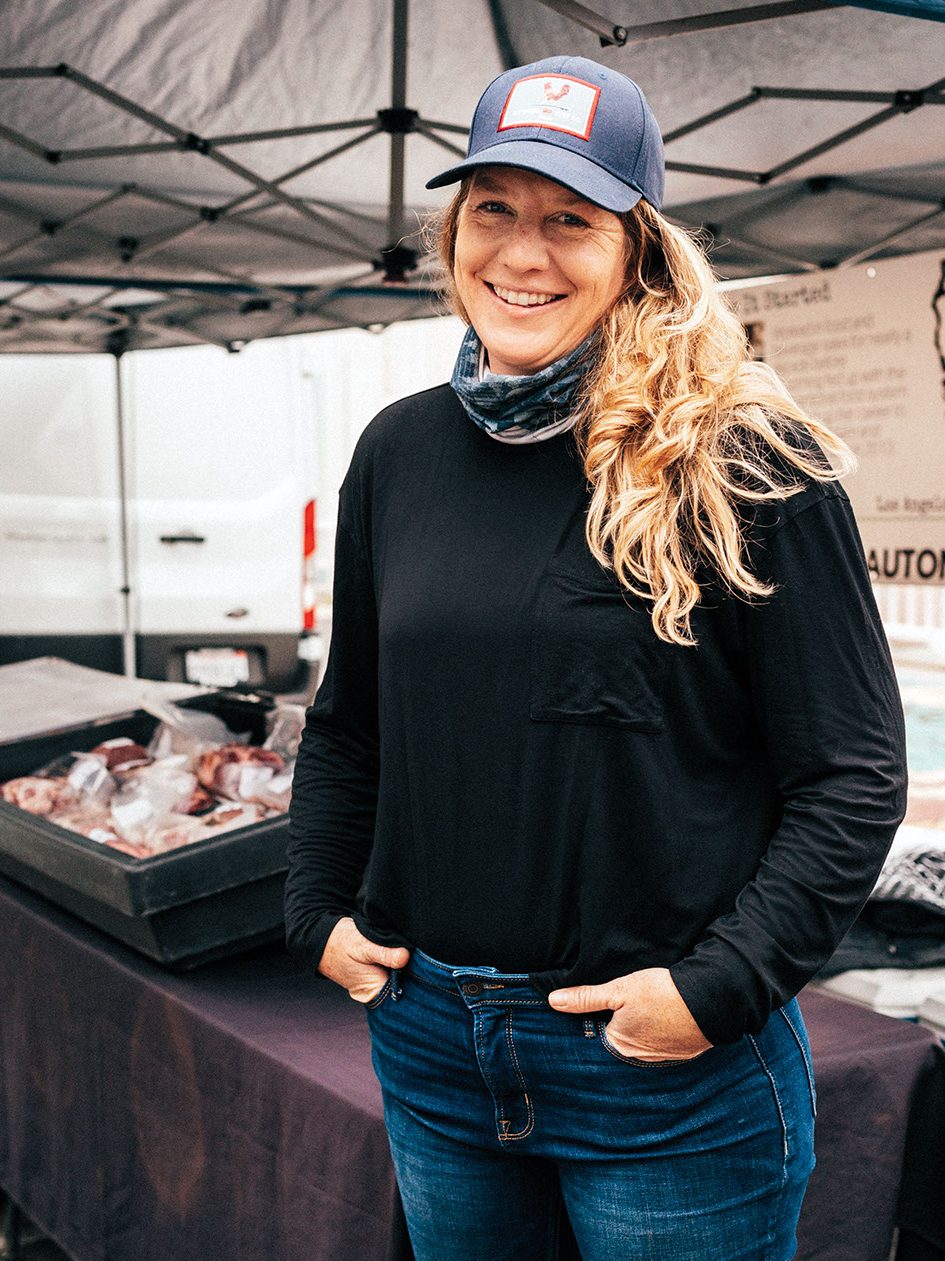
Meredith Bell
Autonomy Farms, autonomyfarms.com
Meredith started the farm in Bakersfield after working nearly a decade in food and beverage sales, when she became fed up with the commercial food system. So she put her boots on the ground and founded a farm to close the disconnect between farmer and consumer, and to improve the food system by producing humanely-raised meat and eggs without hormones, antibiotics, and GMO corn and soy.
Catherine says: “First of all, any female rancher is totally badass in my opinion. She is definitely no exception. She’s super educated and wants you to try different things. You know, you think about why you go to a butcher—and it’s for their knowledge and expertise. She’s helping to bring this incredible meat to us. So, I really trust her when I ask, Oh, what should I have? She’ll say, Oh, my god, try this. It’s always amazing.”

